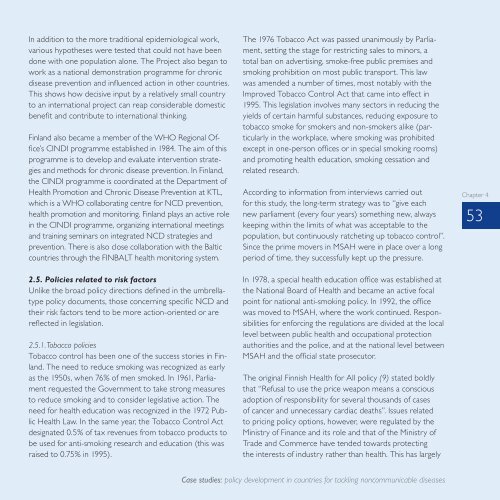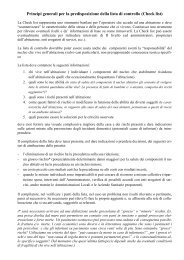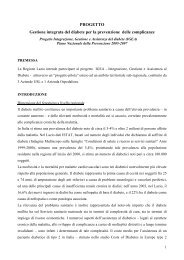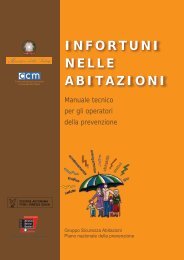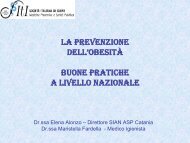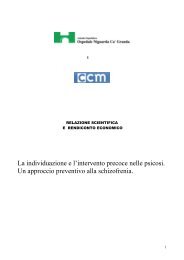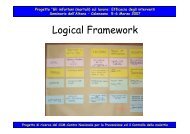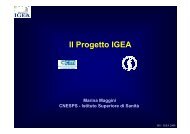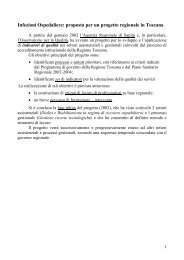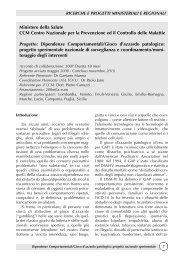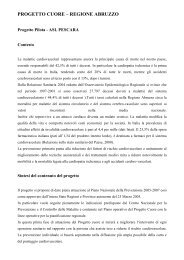Gaining health : analysis of policy development in European ...
Gaining health : analysis of policy development in European ...
Gaining health : analysis of policy development in European ...
Create successful ePaper yourself
Turn your PDF publications into a flip-book with our unique Google optimized e-Paper software.
In addition to the more traditional epidemiological work,<br />
various hypotheses were tested that could not have been<br />
done with one population alone. The Project also began to<br />
work as a national demonstration programme for chronic<br />
disease prevention and <strong>in</strong>fluenced action <strong>in</strong> other countries.<br />
This shows how decisive <strong>in</strong>put by a relatively small country<br />
to an <strong>in</strong>ternational project can reap considerable domestic<br />
benefit and contribute to <strong>in</strong>ternational th<strong>in</strong>k<strong>in</strong>g.<br />
F<strong>in</strong>land also became a member <strong>of</strong> the WHO Regional Office’s<br />
CINDI programme established <strong>in</strong> 1984. The aim <strong>of</strong> this<br />
programme is to develop and evaluate <strong>in</strong>tervention strategies<br />
and methods for chronic disease prevention. In F<strong>in</strong>land,<br />
the CINDI programme is coord<strong>in</strong>ated at the Department <strong>of</strong><br />
Health Promotion and Chronic Disease Prevention at KTL,<br />
which is a WHO collaborat<strong>in</strong>g centre for NCD prevention,<br />
<strong>health</strong> promotion and monitor<strong>in</strong>g. F<strong>in</strong>land plays an active role<br />
<strong>in</strong> the CINDI programme, organiz<strong>in</strong>g <strong>in</strong>ternational meet<strong>in</strong>gs<br />
and tra<strong>in</strong><strong>in</strong>g sem<strong>in</strong>ars on <strong>in</strong>tegrated NCD strategies and<br />
prevention. There is also close collaboration with the Baltic<br />
countries through the FINBALT <strong>health</strong> monitor<strong>in</strong>g system.<br />
2.5. Policies related to risk factors<br />
Unlike the broad <strong>policy</strong> directions def<strong>in</strong>ed <strong>in</strong> the umbrellatype<br />
<strong>policy</strong> documents, those concern<strong>in</strong>g specific NCD and<br />
their risk factors tend to be more action-oriented or are<br />
reflected <strong>in</strong> legislation.<br />
2.5.1. Tobacco policies<br />
Tobacco control has been one <strong>of</strong> the success stories <strong>in</strong> F<strong>in</strong>land.<br />
The need to reduce smok<strong>in</strong>g was recognized as early<br />
as the 1950s, when 76% <strong>of</strong> men smoked. In 1961, Parliament<br />
requested the Government to take strong measures<br />
to reduce smok<strong>in</strong>g and to consider legislative action. The<br />
need for <strong>health</strong> education was recognized <strong>in</strong> the 1972 Public<br />
Health Law. In the same year, the Tobacco Control Act<br />
designated 0.5% <strong>of</strong> tax revenues from tobacco products to<br />
be used for anti-smok<strong>in</strong>g research and education (this was<br />
raised to 0.75% <strong>in</strong> 1995).<br />
The 1976 Tobacco Act was passed unanimously by Parliament,<br />
sett<strong>in</strong>g the stage for restrict<strong>in</strong>g sales to m<strong>in</strong>ors, a<br />
total ban on advertis<strong>in</strong>g, smoke-free public premises and<br />
smok<strong>in</strong>g prohibition on most public transport. This law<br />
was amended a number <strong>of</strong> times, most notably with the<br />
Improved Tobacco Control Act that came <strong>in</strong>to effect <strong>in</strong><br />
1995. This legislation <strong>in</strong>volves many sectors <strong>in</strong> reduc<strong>in</strong>g the<br />
yields <strong>of</strong> certa<strong>in</strong> harmful substances, reduc<strong>in</strong>g exposure to<br />
tobacco smoke for smokers and non-smokers alike (particularly<br />
<strong>in</strong> the workplace, where smok<strong>in</strong>g was prohibited<br />
except <strong>in</strong> one-person <strong>of</strong>fices or <strong>in</strong> special smok<strong>in</strong>g rooms)<br />
and promot<strong>in</strong>g <strong>health</strong> education, smok<strong>in</strong>g cessation and<br />
related research.<br />
Accord<strong>in</strong>g to <strong>in</strong>formation from <strong>in</strong>terviews carried out<br />
for this study, the long-term strategy was to “give each<br />
new parliament (every four years) someth<strong>in</strong>g new, always<br />
keep<strong>in</strong>g with<strong>in</strong> the limits <strong>of</strong> what was acceptable to the<br />
population, but cont<strong>in</strong>uously ratchet<strong>in</strong>g up tobacco control”.<br />
S<strong>in</strong>ce the prime movers <strong>in</strong> MSAH were <strong>in</strong> place over a long<br />
period <strong>of</strong> time, they successfully kept up the pressure.<br />
In 1978, a special <strong>health</strong> education <strong>of</strong>fice was established at<br />
the National Board <strong>of</strong> Health and became an active focal<br />
po<strong>in</strong>t for national anti-smok<strong>in</strong>g <strong>policy</strong>. In 1992, the <strong>of</strong>fice<br />
was moved to MSAH, where the work cont<strong>in</strong>ued. Responsibilities<br />
for enforc<strong>in</strong>g the regulations are divided at the local<br />
level between public <strong>health</strong> and occupational protection<br />
authorities and the police, and at the national level between<br />
MSAH and the <strong>of</strong>ficial state prosecutor.<br />
The orig<strong>in</strong>al F<strong>in</strong>nish Health for All <strong>policy</strong> (9) stated boldly<br />
that “Refusal to use the price weapon means a conscious<br />
adoption <strong>of</strong> responsibility for several thousands <strong>of</strong> cases<br />
<strong>of</strong> cancer and unnecessary cardiac deaths”. Issues related<br />
to pric<strong>in</strong>g <strong>policy</strong> options, however, were regulated by the<br />
M<strong>in</strong>istry <strong>of</strong> F<strong>in</strong>ance and its role and that <strong>of</strong> the M<strong>in</strong>istry <strong>of</strong><br />
Trade and Commerce have tended towards protect<strong>in</strong>g<br />
the <strong>in</strong>terests <strong>of</strong> <strong>in</strong>dustry rather than <strong>health</strong>. This has largely<br />
Chapter 4<br />
53<br />
Case studies: <strong>policy</strong> <strong>development</strong> <strong>in</strong> countries for tackl<strong>in</strong>g noncommunicable diseases


